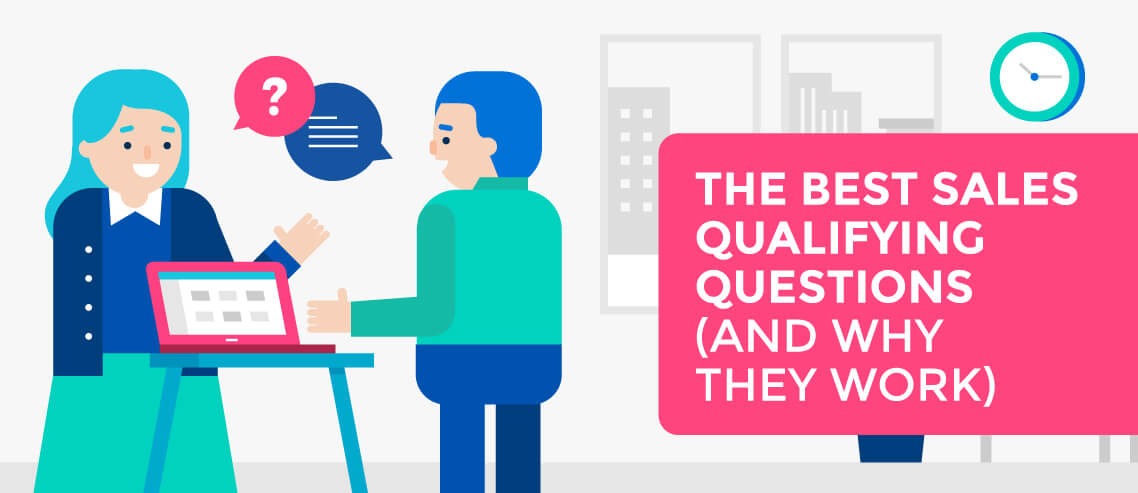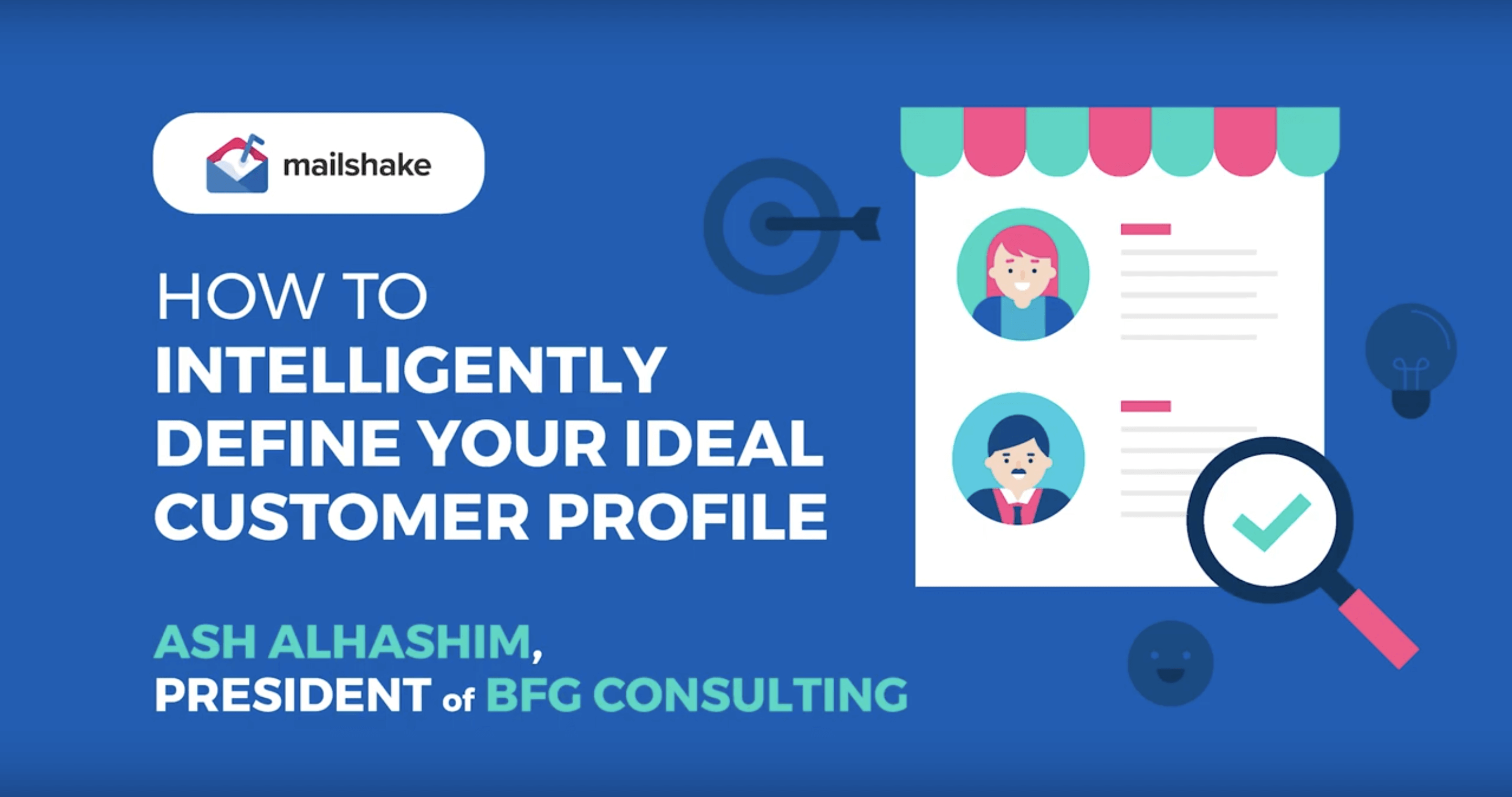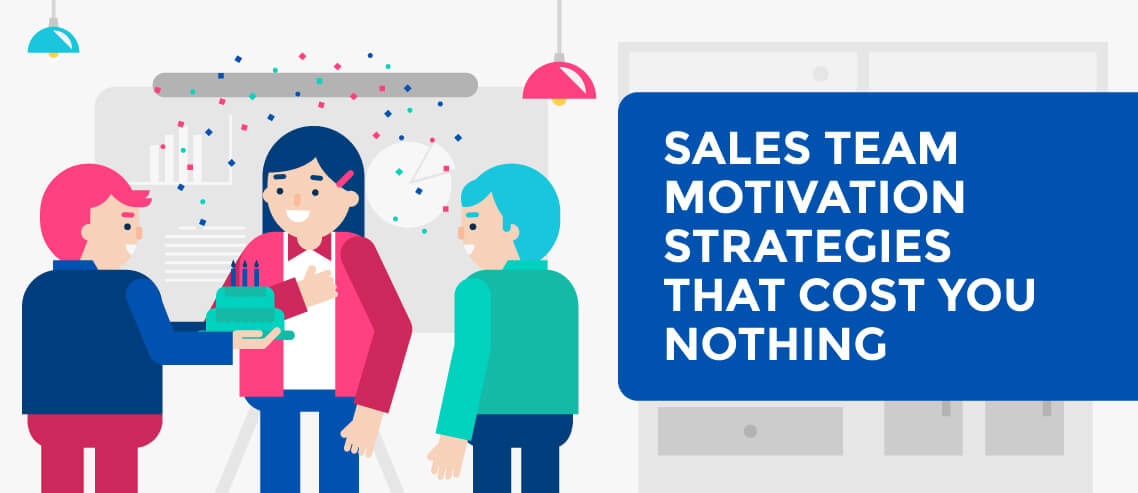Habits of Successful Sales Professionals: What Not to Do
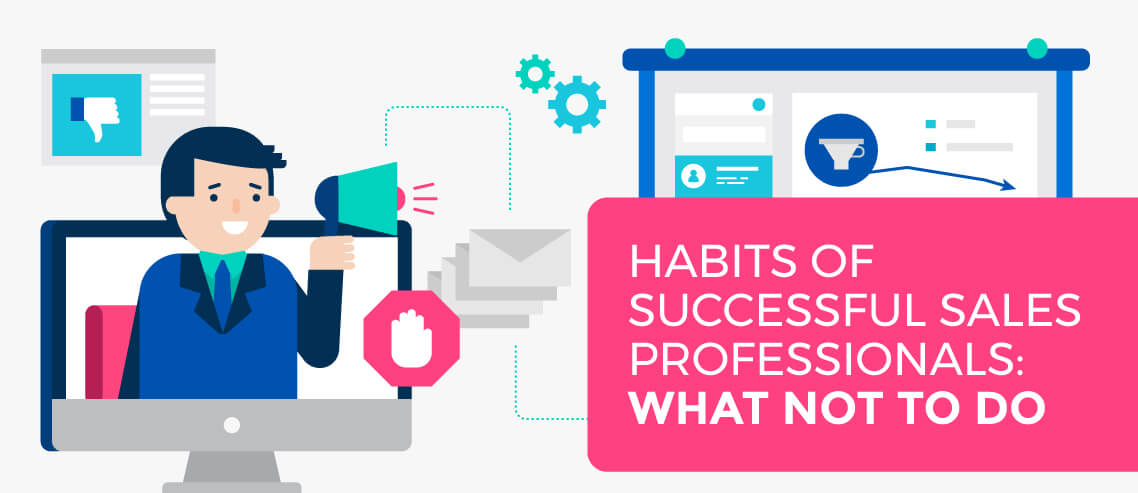
Contents
To succeed in sales today, you need to develop habits of successful sales professionals.
The trouble is…
Well, modern-day sales. Think automation, analytics, social media, and instant access to whoever we want, whenever we want.
With these tools, it’s a glorious time to be a salesperson, right?
“With great power, comes great responsibility.” – Uncle Ben, 2002
Lazy quotes aside, Uncle Ben had a point. It’s your responsibility to wield this new-found power with care and consideration. The most successful salespeople today, develop habits to ensure that they’re doing just that.
What better way to learn about the good habits of successful sales professionals than by looking at the bad habits that you should avoid at all costs.
Habit #1: (Anti)Social Selling
Social selling — today’s hot, sales buzzword.
Social media, especially LinkedIn, is opening doors for legions of tech-savvy salespeople to access key decision-makers with minimal effort.
Marketers are flexing their creative muscles, producing high-quality, tailored content. Thought-leaders can cascade new, innovative ideas en-masse at the press of a button.
It’s wonderful.
On the other hand, it’s also a great platform to royally shoot yourself in the foot.
For every piece of valuable content, there is some useless platitude masquerading as insight. For every well-intentioned InMail, there’s countless impersonal sales spam.
What’s the outcome of all of this anti-social selling?
Desensitisation.
“But what does any of this have to do with me, never mind with sales?”
Great question. I’m glad you asked.
If you’re an active reader of sales-related hashtags and groups, you’ll have already witnessed a healthy dose of potentially damaging LinkedIn practices.
Sales professionals are some of the biggest culprits of schoolboy errors on LinkedIn.
Often, there’s little to no control or process guiding how your salesforce utilizes LinkedIn. It’s one big, professional free-for-all that could be damaging your company’s hard-earned reputation.
What can you do about it?
Fortunately, limiting anti-social selling behaviors is relatively simple.
From a company perspective, you can do two things.
First, implement coaching on the do’s and don’ts of using LinkedIn, and a supporting process to ensure they’re being followed.
Second, align marketing and sales departments to ensure a steady stream of relevant, high-quality content. You’ll also supercharge your reach by sharing and resharing a consistent message across platforms.
On a personal level, there are a few pitfalls of anti-social selling that you want to avoid.
Woefully produced graphic design
Just because you’re an expert at Canva — or other drag-and-drop Canva alternatives — doesn’t make you a creative genius. If you have access to a marketing/creative department, use it. If not, keep your designs clean and simple.
Grammatical errors
No one’s saying you have to be the next Jane Austen to post an update, but take a moment to pop your text through a spell checker or one of the many free text-checking tools. Grammarly and Readable are both great, free options for social media updates.
Harassing complete strangers to join your network/buy your product
Not only does this not work very well, it also runs the risk of annoying potential connections.
RELATED: 20 Steps to Optimize Your Social Profiles for Selling
Instead, leverage your existing network to make introductions to people outside of your network. Having an introduction is far more effective than simply hoping your random InMail/connection request will be accepted.
Sales Bravado
Nothing will endear you less to a prospect than spouting tired old sales mantras.
It’s cool to be passionate about what you do, but if just one potential client exists within your network, save it for the next sales team meeting.
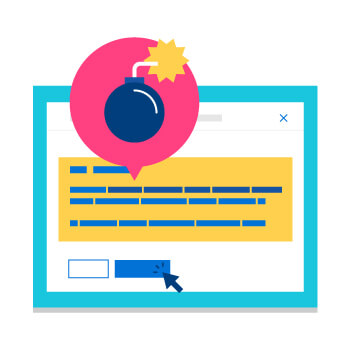
Sharing controversial opinions
By all means, use LinkedIn to provoke thought, but that doesn’t mean you should be provocative.
Keep political, divisive, and controversial views within the confines of your head.
Being too focused on yourself or your company
It might seem like a great idea to share updates straight from your company newsfeed, but few prospects care about your latest ISO audit or the new VP you hired.
Share content that speaks to the common buying motives of your prospects. Share client testimonials (preferably on video) as a way to pique interest. Share things that your prospects and clients care about, not just stuff that makes you or your company look good.
What’s the takeaway?
Treat LinkedIn as the display window for both your professional and personal brand. Create an engaging, personalized, and inviting display that encourages people to come inside and look around.
Habit #2: Disconnection
There I was. Over 100 sales leaders and executives sat in the room. It was about to happen. The Global Rep of Sales, flanked by the European CEO, stepped up to the lectern…
“David Alexander Vipond, £1.2m total life value contract, and his first win for the business!”
** Cue rapturous applause, glitter cannons and marching band **
Ok, so the reality might have been a handshake, a bottle of prosecco, and an envious ripple of slow-clapping, but that moment meant everything to me. Being acknowledged in a room full of my peers was enough to make me crave more.
Every quarter, the process would repeat. Another handshake, another bottle.
Meanwhile, our monthly team meet-ups promised a few hours of training and knowledge-sharing before an extended visit to the pub.
Then, without warning, it all stopped.
Face-to-face meetings were replaced with calls, team get-togethers moved to Skype, and the quarterly awards? A thank-you email would have to suffice.
It was at that point I thought about dusting off my CV.
What happened?
The way we do business changed, and we became disconnected.
Email, video conferencing, and other remote enablement tech are great. They’ve transformed the way we run our sales departments, but there is something you can’t replicate about the human touch.
RELATED: The Best 17 Meeting Scheduling Apps
Of course, there are countless upsides to working remotely. Buffer’s 2019 State Of Remote Work Report paints a pretty clear picture…
99% of respondents said they would like to work remotely at least some of the time for the rest of their careers. 95% of businesses encourage remote working.
But it’s not all sun-drenched hammocks and sweatpants.
Your sales team could be experiencing the dark side of working remotely too:
- The feeling of being disconnected
- Uncertainty and fear about long-term career growth
- Lack of visibility: “Do people recognize the great work I’m doing?”
- The struggle to switch off
- Demotivation
Do any of these sound familiar? You may be able to add a few more to the list.
Think of some of the common motivators for high-performing salespeople: prestige, recognition, affirmation… these benefits lose some of their luster the more remote you are.
What can you do about it?
Lucky for you, the answer to this one is simple.
Don’t neglect the human touch.
It can be tempting to move a meeting to Skype at the last minute to save a few hours of travel. Don’t.
Think about the closest relationships you hold in your personal life. Would you move those interactions to conference calls? Why should your approach to sales leadership be any different?
What’s the takeaway?
This isn’t about extremes. It’s about balance.
Create time for face-to-face team meetings and one-on-ones. Be mindful of your team’s time. Don’t just have a face-to-face meeting for no reason. What is your team getting out of this meeting? Recognition, competition, collaboration, socializing — all legit reasons to ditch the con-call.
The right balance between in-person and virtual connection will help you maintain a happy, healthy, hungry, and motivated sales team.
Habit #3: Outreach Overload
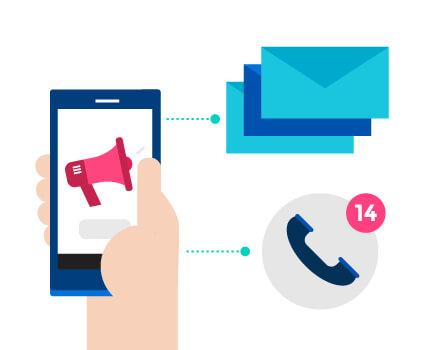
We’ve probably all been guilty of this one.
To make it really clear — outreach overload includes but is not limited to:
- Bombarding Prospect’s with relentless InMails
- Sending never-ending, automated, “catch-all” cold emails
- Calling every person in an office until you strike gold
- Persistently disregarding the explicit requests of a Prospect
- Sending baskets of muffins to your Prospect’s business
… Actually, disregard that last point. I know someone who successfully used the muffin approach as an ice breaker. And let’s face it, who doesn’t like muffins? Make of that what you will.
But at least some of these are legitimate lead-generation techniques, right?
You’re right. These can be legitimate techniques, but with one caveat.
Consideration.
… and respect. Ok, two caveats.
Consideration and respect.
If your outreach methods fail to be considerate, don’t respect the boundaries of your prospects, and are so frequent that it drives your prospect to ask you to stop — then you’ve gone too far.
You have to use moderation. Ah, moderation… make that three caveats.
RELATED: LinkedIn Connection Request Message Best Practices + Templates
Changes in data protection and privacy laws are already seeking to address the issue of outreach overload, and you don’t want to be on the wrong side of them — just look at the impact of GDPR in the United Kingdom.
If we keep pushing the boundaries and keep trying to see what we can “get away with,” it’s likely the controls will only become more rigid.
Sales has long been stuck in the reputational mud. Why drag it further down by hounding prospects?
What can you do about it?
We’ve all heard the same set of platitudes: “no means not yet” and “persistence pays off.” But you shouldn’t push without a reason. Instead, channel your energy into finding people who either:
- Need your product/services
- Want your product/services
- Have shown an interest in your product/services
Just because you can contact EVERYBODY, doesn’t mean that you should.
There’s a simple technique to use when a prospect says “no” or “not interested” that doesn’t involve continually knocking on their door.
Are you ready?
With utmost sincerity, simply ask, “Why?”
Asking “why” throws people. It stops them in their tracks. Sure, it might prompt some to fly off the handle, but more often than not, it’ll open the door to a whole new line of questioning.
- Were you speaking to the right person?
- Is there potential for interest?
- What information do they actually want from you?
- Should you invest more of your precious time with this particular prospect?
This will help you to establish what went wrong and how to approach this, so you can move forward in an ethical way that will preserve the relationship and save you time.
What’s the takeaway?
Getting a “Yes” after 50 attempts doesn’t make you an unstoppable “lead-gen legend”; it just makes you a “busy fool.”
Optimize your outreach by focusing on finding the right audience. Then remember the three caveats I mentioned earlier. Be considerate, be respectful, and use moderation.
Habit #4: Data Mismanagement & Vanity Metrics
“Companies that still aren’t investing heavily in analytics probably won’t be in business in 2021.”
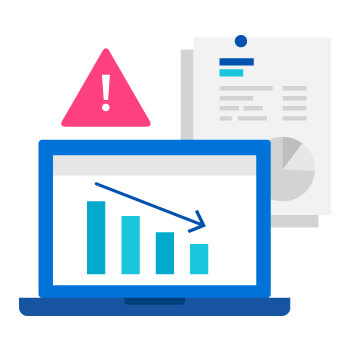
This is from Forbes’ Top 10 Digital transformation trends for 2020, and, chances are, you’ve already heard about the importance of analytics. The question is, are you looking at the right metrics.
It’s easy to be lured into implementing every analytical bell and whistle that your CRM has to offer.
What’s the danger for sales?
Over-reliance on pointless analysis as an indicator or predictor of performance.
Companies hear that they should be doing analytics, so they track anything and everything. That’s not a huge problem in itself, but it leads to vanity metrics, data mismanagement, and analysis for the sake of analysis.
- They’re failing to establish a relevant and effective data-analysis strategy
- They’re neglecting ongoing training and coaching that drives the culture required to sustain an effective data capture strategy
- They’re failing to identify the specific data that’s of ACTIONABLE value
On top of that, all this useless data crunching is wasting your time, which IS harming your results. It could also be contributing to some wildly inaccurate forecasting (and we all know how much an MD loves a forecast).
RELATED: How to Set Effective Sales Goals for Your Sales Team
What can you do about it?
I’ll never forget the day I witnessed a senior sales exec harpoon a room of sales directors over their pipeline. The set up was a thing of beauty:
“AMAZING year, team. Truly incredible. By the way, what are you guy’s converting at?”
He proceeded to lure seller after seller into proudly proclaiming their BS conversion rate:
“70%… 85%… 75%… 100%… That’s what the CRM report would suggest…”
I could’ve sworn he was taking sick pleasure in this.
“Wow! So, let’s see, there is $700,000,000 in next year’s pipeline. You’re on fire! Let’s get a round of applause.”
Ready… Aim…
“I can’t wait to tell the board that we’re resetting the group’s new business target to, let’s see, call it $500,000,000?”
Fire.
You could’ve heard an ant fart.
The mood proceeded to plummet as he unleashed his damning prognosis, and I’m paraphrasing here:
- “Lead” figures aren’t worth a dime unless they’re qualified
- Conversion figures are gravely unreliable if people aren’t honestly documenting their losses
- CRM reporting is only as valuable as the reliability of the data going in
- There has to be quality control
I wouldn’t want to guess how much we spent on CRM globally that year. For all the investment, administration, and time spent data-crunching, what did we have?
A digital finger in the air.
There’s no silver bullet to rid your business of data malpractice overnight, but you can make some adjustments to reverse the damage in the short term.
- Remove unreliable and unqualified data from your system. Wipe the slate clean. Think of it as a long-overdue digital cleanse.
- Establish your “why.” Why do we NEED this data?
- Question every line of data, every report, and every metric that you’re currently capturing. Does it have a measurable impact on achieving your “why”? Be honest and critical — this tends to be where vanity metrics creep in.
- Identify any manual data entry points, and scrutinize the life out of them.
Bad data is worthless. Don’t kid yourself otherwise.
You should consider drafting a sales data strategy (SDS) to support your business growth objectives in the long run, but remember, always begin with “why.”
Involve the entire sales team in the creation of the SDS. If you can secure buy-in from the get-go, then you will see a lot more change than trying to force a drastic culture change overnight.
Salespeople are creatures of habit, and they will probably find a workaround if they’re not onboard.
Lastly, establish what “quality” data looks like. What checks and balances are you going to implement to ensure quality?
Train. Coach. Review. Repeat.
What’s the takeaway?
If data is going to influence your growth strategy, then it’s time to invest the time and money to make sure it’s done right. Your future P&L thanks you in advance.
4 Habits of Successful Sales Professionals
This was a long article, so let’s recap.
- Treat LinkedIn and all of social media with respect. Create an engaging, personalized, and inviting online persona that attracts people to your brand and your company.
- Don’t neglect the power of the human touch. Create time for team and face-to-face meetings, but always be mindful of their time. What’s in it for them?
- Getting a yes after 50 attempts doesn’t mean anything if you wasted time getting that yes and burned bridges in the process. Optimize your outreach methods and don’t overstep the boundaries.
- Bad data is worthless. Invest into ensuring that you only capture the good stuff, and involve your sales team in data-driven initiatives from the outset.
Congratulations! You’re well on your way towards good habits of successful sales professionals, or, at the very least, you’ve gained some insight into what to watch out for in your organization.
Insight is only valuable if it’s actionable, though. So, take action.


